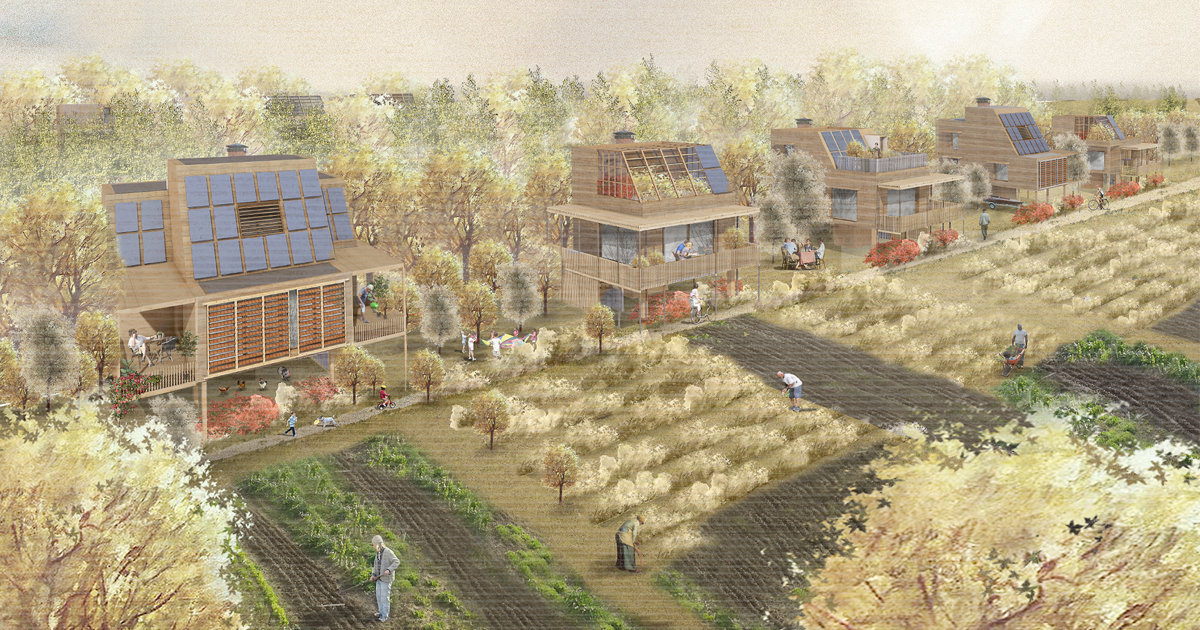
It is clear that the resources of our world are becoming more and more limited compared to the growth of the population. Therefore, there is an urgent need to rethink our relation to nature and to provide innovative answers regarding food production, energy demands, and social relations.
In that context, the following work is an attempt to sustainably design a new settlement in the town of Ballò, in the Veneto region. Back-to-the-Garden proposes a new reengagement with the landscape, aiming for balance between human needs and natural resources and translating a new self-sufficient style of communal living.
The new settlement is connected to the Motorway-A4 and the High-speed-railway using a sustainable mobility system that runs through the entire urban stripe Turin-Trieste. It comprises twelve communities of a maximum of fifteen dwellings implemented in a ring system surrounding the Forum and the communal house.
The design of the dwellings is optimized to reduce its impact on the environment. The use of passive strategies reduces the energy consumption during the summer/winter seasons. Furthermore, the design of the dwellings follows the cycle of life. It enables to add new rooms according to the users’ needs and offers adaptability, flexibility and individuality.
Although Back-to-the-Garden starts with a utopian vision to change the future of urban design, the calculations of food production, energy consumption and resources prove this utopia could become reality.
The student worked out the semester assignment“using-landscape”, with sustainable settlement in the context of a survivable-society.The search goes beyond the usual concepts.The landscape is understood as a source and resource for one’s own life basis,with the understanding of food production andthe need for building materials.This became the basis of her design ideas.
The research goes to concepts of the 19/20thcentury.It’s interesting to note that at that time,the utopias were,and still are,alternatives to an existing mismanagement. The material alienation by the division of labor in industrialization is confronted with life-design,which makes the working out of the basics of life,the real content of life.If,in the 19thcentury,the difficult living conditions of the working class were the driving force behind a rethink,it’s now clear that the globalized market doesn’t take into account the limits of terrestrial resources and ultimately stifles society despite the misery.
She places bravely this epochal push of the limits of humanity in relation tothe prototype ofparadise.She names her design“Back-to-the-Garden”.
From this basis the student directs her concept ideas. She develops a self-sustaining-settlement in all its consequences.She also attacks philosophical approaches,which gives her the mental framework for existential thinking.In its implementation,she never loses the fine-grained-layer,which generates from the architectural idea,the real quality of life in her design.